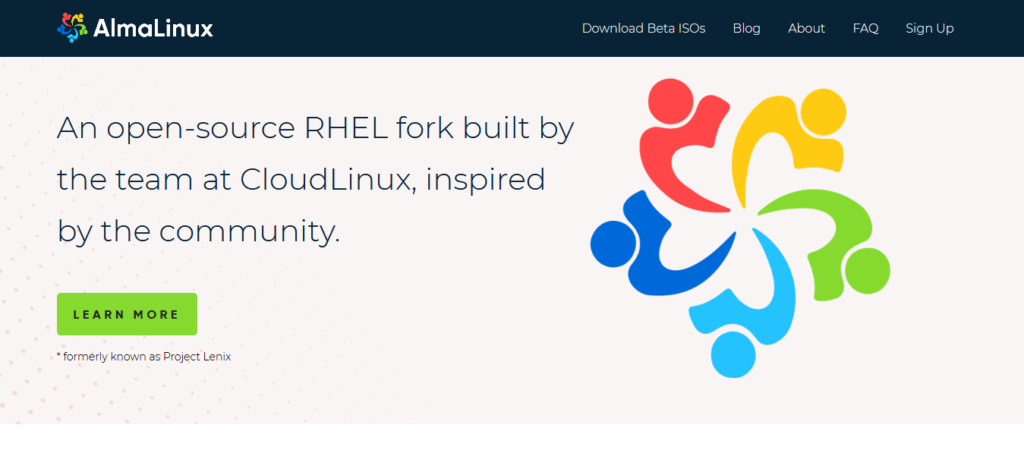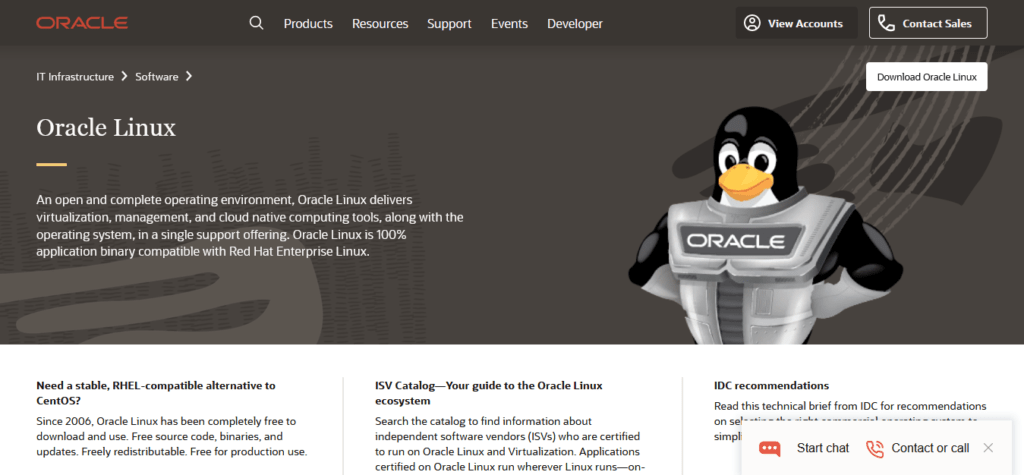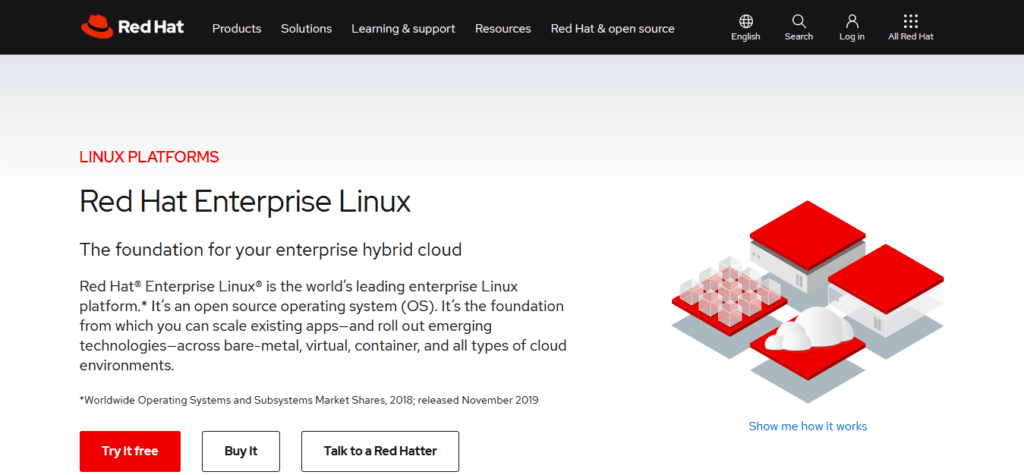Discover the best CentOS alternatives and access complete migration guides. Ensure a smooth transition with step-by-step instructions for popular Linux distributions. #centlinux #linux #centos
Table of Contents
Introduction
Red Hat’s recent announcement regarding the termination of CentOS Linux as a rebuild of the Red Hat Enterprise Linux (RHEL) operating system has left many in the Linux community disappointed and frustrated. For years, CentOS has been a go-to choice for system administrators, businesses, and developers who needed a stable, free alternative to RHEL. With this decision, Red Hat is shifting the focus of CentOS away from its traditional role as a downstream clone of RHEL, causing many users to reconsider their long-term Linux strategy.
However, it’s important to note that CentOS is not entirely dead. Instead, CentOS Linux is evolving into an upstream (development) branch of RHEL, a shift that introduces a new model for future releases. This new distribution, known as CentOS Stream, serves as a rolling preview of what will eventually be included in upcoming RHEL versions. Unlike the previous CentOS model, which provided a stable, production-ready release, CentOS Stream is designed for developers and organizations looking to stay on the cutting edge of RHEL development.
For those currently using CentOS 8, migrating to CentOS Stream is an option, though it comes with fundamental differences in how updates and stability are handled. If you’re considering making the switch, you can follow our detailed guide on how to migrate from CentOS 8 to CentOS Stream to ensure a smooth transition.

Although the Red Hat commits to provide the regular updates like traditional CentOS Linux releases, but no one can deny the fact that the Community’s most favorite distribution is no longer a stable alternative of RHEL.
To address the disappointment of the Linux community, Red Hat has immediately announced a free Redhat subscription for up to 16 production servers.
This license limit is quiet enough for small to medium size organizations. But let’s see how long they will continue to provide this free Linux operating system, or it is just a marketing stunt for converting CentOS Linux users to Red Hat.
Meanwhile, the Linux community is very desperate about the future of their Server Operating System. And they are looking for the CentOS alternatives to fulfill their Data Center requirements.
CentOS Alternatives
At present, several excellent alternatives to CentOS are available for Linux users who are looking for a stable and reliable operating system. With Red Hat shifting CentOS to a rolling-release model under CentOS Stream, many system administrators, businesses, and developers are searching for suitable replacements that maintain the traditional stability and long-term support (LTS) model they relied on.
Below, we explore some of the best CentOS alternatives that offer similar functionality, robust security, and enterprise-grade reliability. These distributions are well-suited for production environments, web hosting, cloud infrastructure, and other critical workloads.
Rocky Linux

Rocky Linux is a powerful, community-driven enterprise operating system created to be 100% bug-for-bug compatible with Red Hat Enterprise Linux (RHEL). It was developed in response to Red Hat’s decision to shift CentOS from a stable downstream distribution to CentOS Stream, which follows a rolling-release model. Rocky Linux is currently under active development, backed by a strong community of developers, system administrators, and organizations dedicated to providing a long-term, stable alternative to CentOS.
What makes Rocky Linux stand out is its leadership and vision. The project is spearheaded by Gregory Kurtzer, the original founder of the CentOS project, ensuring that it stays true to the core principles that made CentOS so popular: stability, reliability, and enterprise-grade security. Since its inception, Rocky Linux has quickly gained traction among businesses, cloud service providers, and IT professionals looking for a seamless transition from CentOS.
Rocky Linux is widely regarded as the best CentOS alternative due to its commitment to open-source principles and its focus on long-term support. The distribution aims to provide a free, community-maintained operating system that can serve as a true replacement for CentOS in production environments.
For more information, updates, and installation details, you can visit the official Rocky Linux website, where you’ll find comprehensive documentation, community forums, and download links to get started.
Migration Guide: How to migrate CentOS 8 to Rocky Linux
AlmaLinux

AlmaLinux was originally launched under the code name Project Lenix as a response to the discontinuation of CentOS Linux. It is a community-driven, open-source enterprise operating system designed to fill the gap left by CentOS’s shift to CentOS Stream. AlmaLinux is a 1:1 binary-compatible fork of RHEL 8, ensuring seamless compatibility with applications and environments built for Red Hat Enterprise Linux (RHEL). This makes it an ideal choice for businesses, developers, and organizations that require a stable, long-term support (LTS) Linux distribution for their workloads.
AlmaLinux was developed and is actively maintained by the creators of CloudLinux OS, a well-established commercial Linux distribution optimized for hosting providers. Unlike CloudLinux OS, which is subscription-based, AlmaLinux is completely free, making it accessible to a broader audience. CloudLinux Inc. has committed $1 million in annual sponsorship to ensure AlmaLinux’s continued development, security updates, and long-term stability. Future RHEL releases will be mirrored in AlmaLinux, with ongoing development efforts guided by an independent AlmaLinux Foundation, ensuring it remains a truly community-driven project.
As an enterprise-grade server operating system, AlmaLinux offers predictable release cycles, extended support windows, and high stability, making it a trusted CentOS alternative for running critical workloads. Many businesses and hosting providers have already adopted AlmaLinux as their preferred CentOS replacement, benefiting from its reliability and active community support.
The first beta version of AlmaLinux was released on January 28, 2021, and it has since gained widespread adoption in production environments. You can download the latest stable releases from the official AlmaLinux website, where you’ll also find documentation, support forums, and migration guides to help you transition from CentOS.
Migration Guide: How to migrate CentOS 8 to AlmaLinux
Oracle Linux

Oracle Linux is a powerful, open, and fully integrated enterprise-grade operating environment designed to meet the demands of modern IT infrastructure. It combines a high-performance Linux operating system with built-in virtualization, management, automation, and cloud-native computing tools, all within a single, comprehensive support offering. Designed for reliability and scalability, Oracle Linux is 100% application binary compatible with Red Hat Enterprise Linux (RHEL), making it an ideal choice for businesses seeking a CentOS replacement without sacrificing compatibility or stability.
Since its initial release in 2006, Oracle Linux has remained completely free to download, use, and distribute—offering unrestricted access to source code, binaries, and updates. Unlike some enterprise Linux distributions that charge for critical updates, Oracle Linux provides freely available security patches and bug fixes, ensuring users can maintain a secure and up-to-date system without incurring additional costs.
For years, Oracle Linux has been a top choice for deploying Oracle Database software, as it is optimized and rigorously tested to work seamlessly with Oracle products. However, after the discontinuation of CentOS Linux, it has gained renewed attention as a viable server platform for a wide range of workloads, including cloud infrastructure, enterprise applications, and web hosting.
If you’re searching for a stable, secure, and RHEL-compatible Linux distribution, Oracle Linux stands out as a reliable alternative. To explore more details, download the latest release, or access documentation, visit the official Oracle Linux website.
Migration Guide: How to migrate CentOS 8 to Oracle Linux
Red Hat Enterprise Linux

Red Hat Enterprise Linux (RHEL) is the most widely deployed commercial Linux distribution in the public cloud, trusted by enterprises, governments, and organizations worldwide. It is certified on hundreds of public cloud platforms and service providers, ensuring seamless integration with leading cloud environments such as AWS, Microsoft Azure, and Google Cloud. Additionally, RHEL is compatible with thousands of software applications and hardware configurations, making it one of the most versatile and enterprise-ready Linux operating systems available.
As the world’s leading open-source enterprise operating system, RHEL provides a robust, security-focused platform designed for mission-critical workloads. It offers built-in security features, advanced system management tools, and long-term support, enabling organizations to run their applications with confidence. Whether deployed in datacenter infrastructure, virtualized environments, or cloud-based ecosystems, RHEL delivers high performance, scalability, and reliability.
Following the discontinuation of CentOS Linux, Red Hat has introduced a free RHEL subscription for up to 16 servers, aimed at encouraging small businesses, developers, and Linux professionals to adopt RHEL as a CentOS alternative. This initiative allows users to evaluate, develop, and deploy applications on RHEL at no cost, ensuring they can benefit from Red Hat’s industry-leading stability, support, and security without the financial barrier.
To learn more about Red Hat Enterprise Linux, explore its features, and access the free subscription program, visit the official Red Hat website.
Migration Guide: How to migrate CentOS 8 to Redhat
Springdale Linux

Springdale Linux is a lesser-known yet noteworthy alternative to CentOS, developed and maintained by the computing staff at Princeton University and the Institute for Advanced Study.
This distribution is specifically designed to cater to academic and research institutions, making it similar in purpose to Scientific Linux, which was discontinued last year. Like its predecessor, Springdale Linux is a direct fork of CentOS, offering a stable and reliable operating system for scientific and educational computing needs.
While Springdale Linux remains relatively obscure compared to other CentOS alternatives, its developers take pride in their ability to deliver timely releases. In fact, they had Springdale Linux 8 available before CentOS officially released its own version.
Although full DVD ISOs for version 8 are not currently available, users can still download the Boot/PXE ISOs for Springdale Linux 8.3, allowing them to install and configure the system as needed. With a strong academic backing and a focus on stability, Springdale Linux continues to be a viable choice for researchers, scientists, and institutions looking for a dependable Linux distribution.
Migration Guide: How to migrate CentOS 8 to Springdale Linux
Final Thoughts
In conclusion, exploring the best CentOS alternatives can help you find a Linux distribution that fits your needs for stability, support, and performance. By following comprehensive migration guides, you can ensure a smooth and successful transition to your new operating system.
Your Linux servers deserve expert care! I provide reliable management and optimization services tailored to your needs. Discover how I can help!
Ensure a hassle-free transition with professional support tailored to your specific requirements.
Recommended Courses
If you’re serious about leveling up your Linux skills, I highly recommend the Linux Mastery: Master the Linux Command Line in 11.5 Hours by Ziyad Yehia course. It’s a practical, beginner-friendly program that takes you from the basics to advanced command line usage with clear explanations and hands-on exercises. Whether you’re a student, sysadmin, or developer, this course will help you build the confidence to navigate Linux like a pro.
👉 Enroll now through my affiliate link and start mastering the Linux command line today!
Disclaimer: This post contains affiliate links. If you purchase through these links, I may earn a small commission at no extra cost to you, which helps support this blog.

Leave a Reply
Please log in to post a comment.